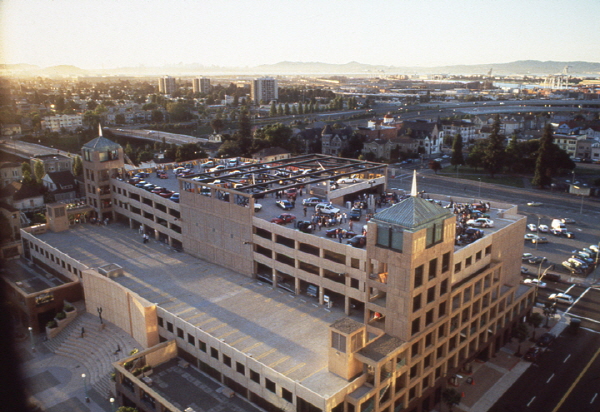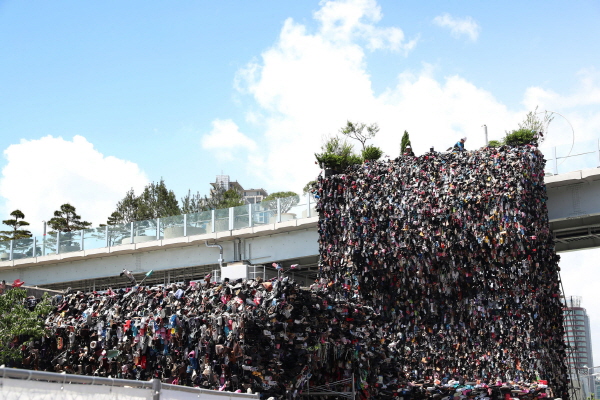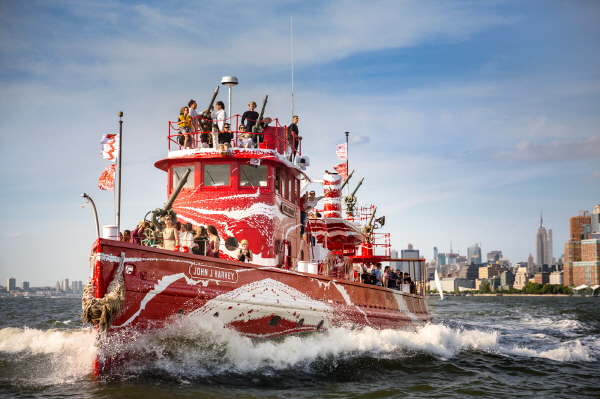After Rubber Duck and Super Moon, a large sculpture named KAWS: Holiday appeared on Seokchon Lake this summer. It is a huge balloon resembling Mickey Mouse, which measures about 28m in length, 25m in width, and 5m in height. As the original creator of the sculpture suggested that people take a break by escaping from their daily routines, many visitors have viewed it and have been given a feeling of relaxation. In fact, it is public art, a field of art which is consistently beloved around the world. Public art has various advantages but is it possible that there could be some concerns around it. The Sungkyun Times (SKT) explains what public art is, suggests some controversies about it, and introduces two unique examples from around the world.
What is Public Art?
Definition and Origin of Public Art
Public art is art that is based in public areas and allows anyone an access to it. Unlike the artwork in exhibitions and museums, public art is not restricted by morphological factors such as size or techniques used to create art. The term was initially coined by British scholar, John Willett. At that time, there was criticism that art could only be truly appreciated by the upper classes, and therefore, did not represent the perspective of general citizens. He, therefore, intended to expand the concept of art, which could communicate with the public and embrace their view. In other words, public art refers to artworks that have a social function in the way that they communicate by moving them out of the museums where they are traditionally shown.
History of Public Art
Before the exact term appeared, public art was made and used for political purposes by nations. For example, from the late 19th to the early 20th century, the Nazis and the Soviet Union installed monuments and statues in public places to propagate their ideologies. During the Great Depression in the United States (US), however, public art was presented as a current concept. Franklin D. Roosevelt, the president of the US at that time, decided to implement the policy named the Federal Art Project. The goal of the project was not just to provide jobs to artists on the street but to make their artworks social assets of the whole community. In fact, works created through the project were considered to reflect emotions of American citizens at that time, thus they were referred to as “art for the public.” Shortly afterward, influenced by the project, several art policies were spread over Europe and the term “public art” appeared.

In the 1970s, some artists criticized public art. Since public art was only used as a political tool, they emphasized the necessity for its representing more various perspectives than before. In addition, science and technology, in particular communication or graphic technologies, developed rapidly. Thus, new types of public art which convey diverse messages appeared.
Double Face of Public Art
A Megaphone for Social Minorities
Current public art has performed a key role as a megaphone for social minorities. That is, public art allows people to realize social problems like racism, gender discrimination and environmental pollution and demands change in society. Both finished artworks and their production process can deliver messages for change. Social minorities take part in a process of creating arts, so they can get the right to speak through artworks. For instance, those who live in deprived areas can get an opportunity to express their difficulties by participating in painting an art mural in their village. The process can spread through mass media, so it becomes a turning point to overcome problems.

Among many examples, the most successful example of this is the Oakland Projects by Suzanne Lacy. The projects started in 1991 and continued for 10 years. Since Oakland, California had quite a high rate of juvenile crime at that time, Lacy created a group including both adults and juveniles. She led the group to do several performances and created artworks about juvenile problems, resulting in a change of policies and legal systems in Oakland. They uploaded videos of about 200 young people coming together to discuss various topics such as drugs, neighbors and music. As a result, this project contributed to a more positive image of young people and helped to develop youth policy in Oakland.
Eyesores Without Artistic Value
On the other hand, some people argue that public art emphasizes social functions so much that it starts to lose its artistic value. Nowadays, most public art works have been established and put in place for the simple purpose for the public to get familiar to art itself, without proper consideration. Therefore, recent public art has become increasingly lacking in aesthetic values and has been considered as eyesores. This causes people not to give any meaning to the artwork. Before long, it also loses its social value because public art, which cannot communicate with the public, does not have any benefit.

This kind of public art is often neglected and considered to be a troublesome problem. Shoe Tree, for example, was public art in Seoul, which consisted of 30,000 used shoes. Costing about $100,000, it was established to stress the seriousness of environmental pollution. Nevertheless, most citizens in Seoul severely criticized the sculpture and even said that it was ugly as well as likely to smell bad.
Unique Public Art Around the World
Despite some of the controversies surrounding public art it is irrefutable that public art is receiving considerable attention from global society. Among the various types of public art, there are two unique examples of public art projects that can catch people’s eyes now.
Flow Separation: A Peaceful Message
On July 28th, Flow Separation by Tauba Auerbach was opened to the public in New York. Flow Separation is the public art project using John J. Harvey, a retired fireboat. Launched in the 1930s, the boat worked until 1994 and saved numerous lives when the 9/11 terror attack happened. For the project, Harvey has now been transformed into a dazzle ship, which was a style of dazzle painting camouflage extensively used to confuse enemies during World War II. To reenact the dazzle camouflage, a marbling technique was used. Oil-based inks of different colors were put in a large container, and a dazzle pattern was created on its surface by combing it. The pattern made through the process reminds people of the chaotic time when Harvey was mainly used. The intention of the project is to remember the horrible modern history when a lot of lives were taken. It provides the opportunity for modern people living in uncertain times not to repeat the wrongs of the past. The project will be shown at Brooklyn Bridge Pier and the Hudson River Pier until May 12th, 2019, and the public is welcome to board Harvey and look inside.

Noksapyeong Station Project: A Green Message
Noksapyeong Station Project is a part of the public art project which Seoul has prepared since August. Transforming the station itself into a huge public artwork, the project wants to convey the eco-friendly message to citizens passing through it.
The original idea of the project was derived from the word Noksapyeong, which means a field filled with green grass. As environmental problems are getting worse, it provides people with the ability to experience nature in everyday life.
According to the Seoul Metropolitan Government, the project has been conducted based on the glass dome at the center of the Noksapyeong station. The station is planned to be designed into three themes: Shape of Light, Sound of Forest, and Temperature of Ground. Aesthetic sculptures such as a lighting device that changes with weather and time will be installed there. Furthermore, an art program in which citizens can participate is going to be held in order that people can visit the station and take some plants back home. Expected to be open by December, the project can become an artistic place which offers the peacefulness of nature for those who are tired of urban life.

Public art is now inseparable from modern society. Even though there is some criticism, it will be improved and give more and more people new experiences. Thus, if Kingos need to take some time out from their busy lives, looking around and paying attention to nearby public art can be a good way to take a rest.
